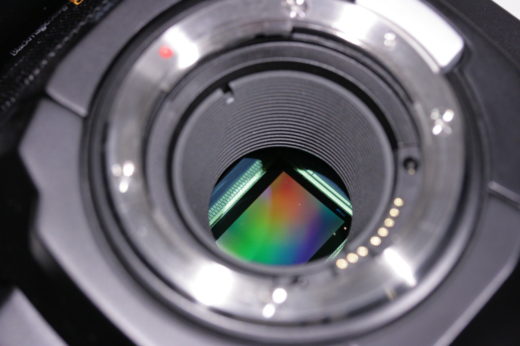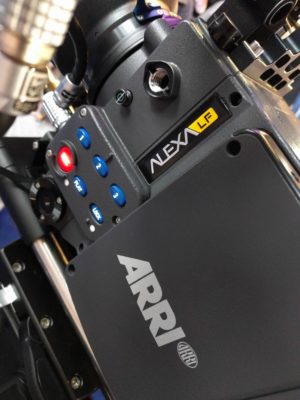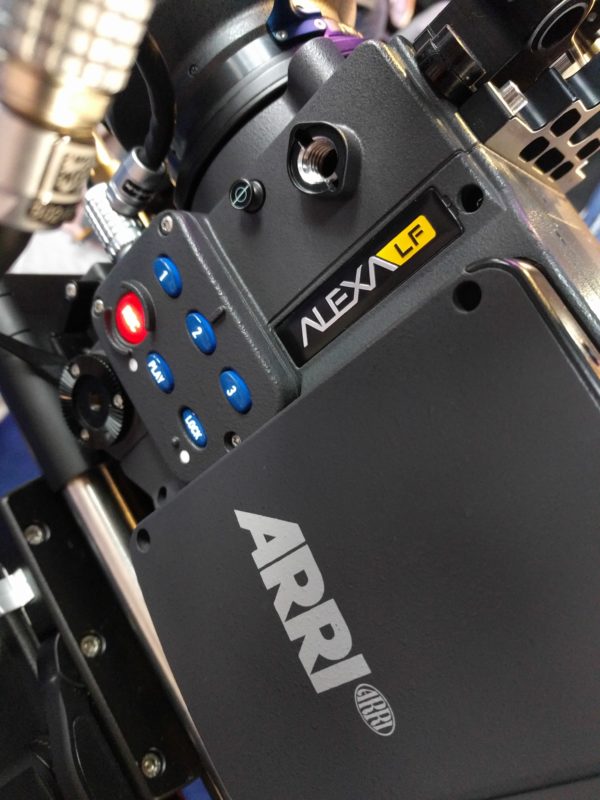Keen observers may have noticed that a well-known manufacturer of cinematographic tools has recently released a new camera. People who are really willing to go through the internet with a fine-toothed comb may also have noticed that this 4K camera actually has a 4.6K horizontal resolution, which is quite a lot less than some other, cheaper options, and that this has raised some comment.
One interesting if coincidental fact is that Arri’s new effort has precisely the same number of pixels per row as Blackmagic’s vastly less expensive Ursa Mini Pro. There must be something special about the number 4608 to sensor designers; perhaps it’s just something a bit more than 4000 that’s divisible by base two numbers, but to address the crushingly obvious, no, clearly, isn’t anything like the same piece of silicon. Arri’s sensor is 3164 photosites high, making it, at 1.46:1, squarer than the Ursa’s 1.78:1 but wider than a full 1.33:1 silent aperture.
The design has ample width for Super-35 shooting, and ample height for 2:1 anamorphics. A benefit of large format is the ability to shoot 2:1 anamorphics at their native image size, something that was otherwise only possible on 4:3 Alexas. Even without anamorphics, at least some of the people shooting Alexa LF are actually only there for contractually-mandated 4K, resulting in an effective sensor only fractionally bigger than Super 35.
And Arri’s new chip is also fractionally bigger than Super 35 – at almost 28mm wide, it’s more than ten per cent wider than the SMPTE spec for the silent aperture, which is defined as 0.980”, around 25mm, and that’s already larger than the sound aperture. No matter; even for the wider members of tricky lens sets that might struggle to cover the beyond-35 ALEV 4, the SMPTE specified area should still have enough dots to satisfy picky distributors demanding anything up to full DCI 4K.
The thing makes sense.

Scowling pixel-peepers
The irony is that the scowling pixel-peepers who have found a way to be disappointed by a 4.6K sensor are exactly the people the camera was designed to satisfy. Nobody was complaining that Alexa lacked the pixels for convincing cinema. Giant-screen work and theme park rides are interesting and worthwhile pursuits, but conventional cinema has shown itself to be fairly resistant to change. We might even hazard it’s is a fairly stable artform, in the same way that people still carve marble even though your phone can scan someone’s head and 3D printers are inexpensive.
That’s not to say Arri’s first-generation ALEV wasn’t starting to look a little geriatric in other ways. Alexa is a quiet camera – most high-end digital cinematography devices are – and complaints of noise at 800 ISO were perhaps a little unfair. Even so, Alexas to date have widely been regarded as 400 or 800 ISO devices in a world of dual-gain chips and sensitivities in the thousands.
Sometimes, that even means mandatory sensitivities in the thousands, given the demand for dynamic range and the fact that it’s been easier to make a sensor lower noise (improving shadow range and sensitivity) than to somehow pack more electrons into a given photosite size (and improve highlight range). The extra sensitivity of the new design is therefore probably more overdue than the extra resolution. It’s a concomitant of the sheer strength of Alexa’s market position that it managed to get by on what really is a fairly mundane paper spec for so long.
As to why Arri didn’t go further, or sooner, it’s tempting to reach for the simple argument that bigger photosites have lower noise, and that’s true. The thing is, if we consider the overall performance of a camera on a fixed size of screen, a larger number of smaller photosites will produce smaller noise artefacts which are likely to be less objectionable, even averaging out if the image is downscaled for distribution. There is a fill-factor penalty for larger numbers of photosites, in that each one is inevitably surrounded by some amount of non-photosite electronics. More photosites, more electronics; less sensitive area. Higher resolution does, then, still imply some penalty.

4K A Zero-Sum Game?
So this is not entirely a zero-sum game, but it’s close enough to be more or less conundrum of philosophy, and in the long time since ON Semiconductor made ALEV it’s certainly the case that fundamental improvements in sensor tech have done enough to offset the inevitable fill factor shortfall on a 4K sensor.
Yes, it would have been nice, perhaps, to have the extra space of a 6K image so as to be able to frame like Fincher and trim the operating of every shot in post with a country mile of spare space, and end up with a good solid 4K result. Operating in UHD, the Alexa 35 has 384 spare pixels each side, about 10% of the frame width, so we’re not going to get that much wiggle room. If you want that, grab an LF, and then wonder what happens when Arri applies the ALEV 4 technology to a large format camera.
The biggest takeaway, though, is that visible picture detail has to do with a lot more than sheer photosite count. The original Alexa is not a camera that targets blistering razor-sharpness. For a start, it has optical low-pass filtering designed by someone who really disliked aliasing, and who would argue. We can confidently expect a similar engineering opinion to have been applied to the Alexa 35, but it does mean that these cameras probably don’t have the line-pairs-per-millimetre numbers of things with even fewer pixels.
Big distributors specify photosite count. They don’t specify optical low pass filters, lens sharpness, filtration, haze, or handheld camerawork that constantly motion-blurs the image. Whether or not we conclude that Arri has built a camera to satisfy contractual resolution demands that never made much technical sense to begin with, we now have a dual-gain Alexa with lots of sensitivity, and that’s probably what matters most.

Filmtools
Filmmakers go-to destination for pre-production, production & post production equipment!
Shop Now













